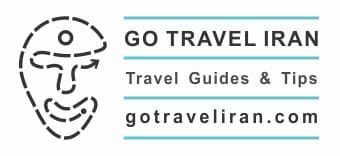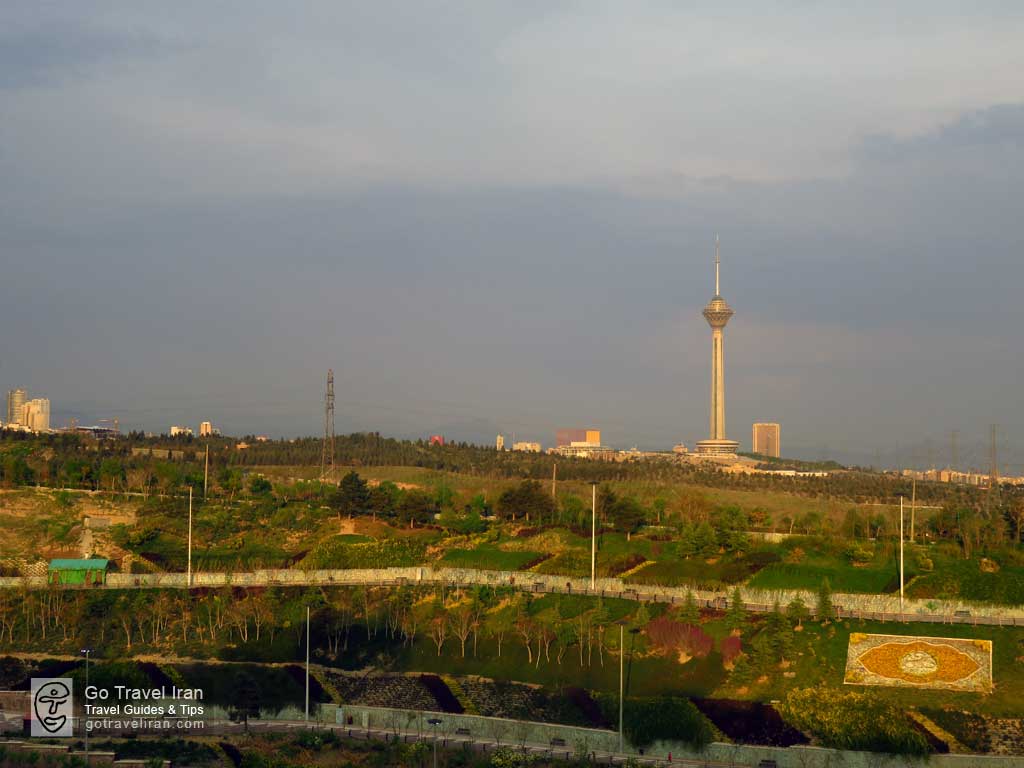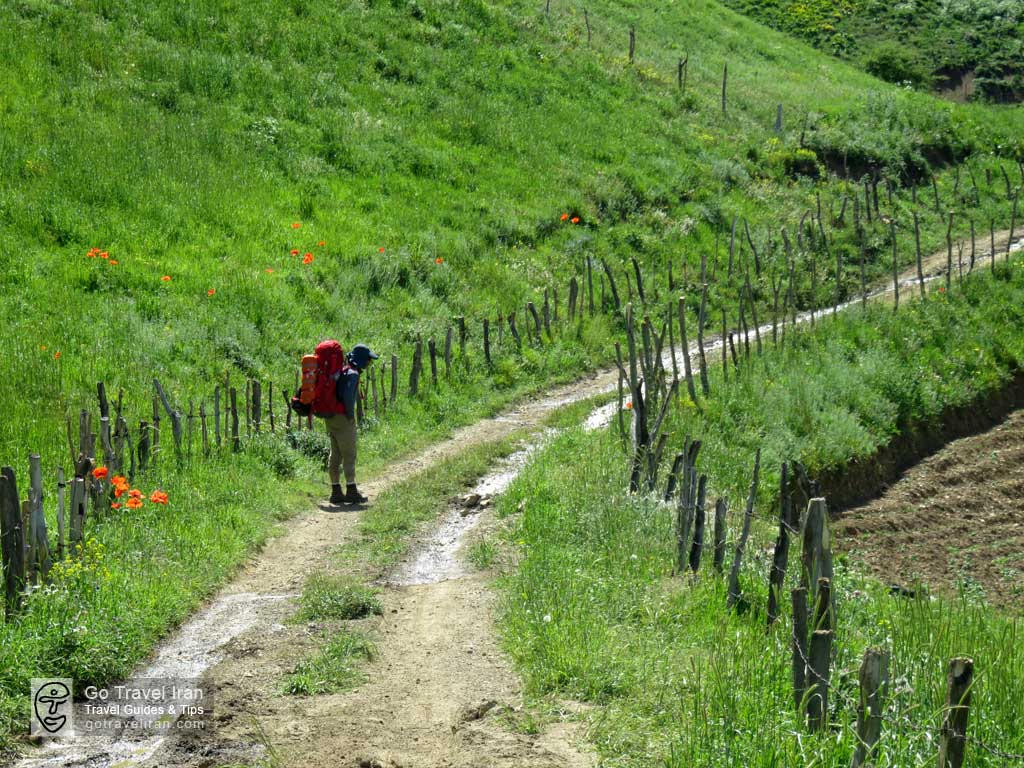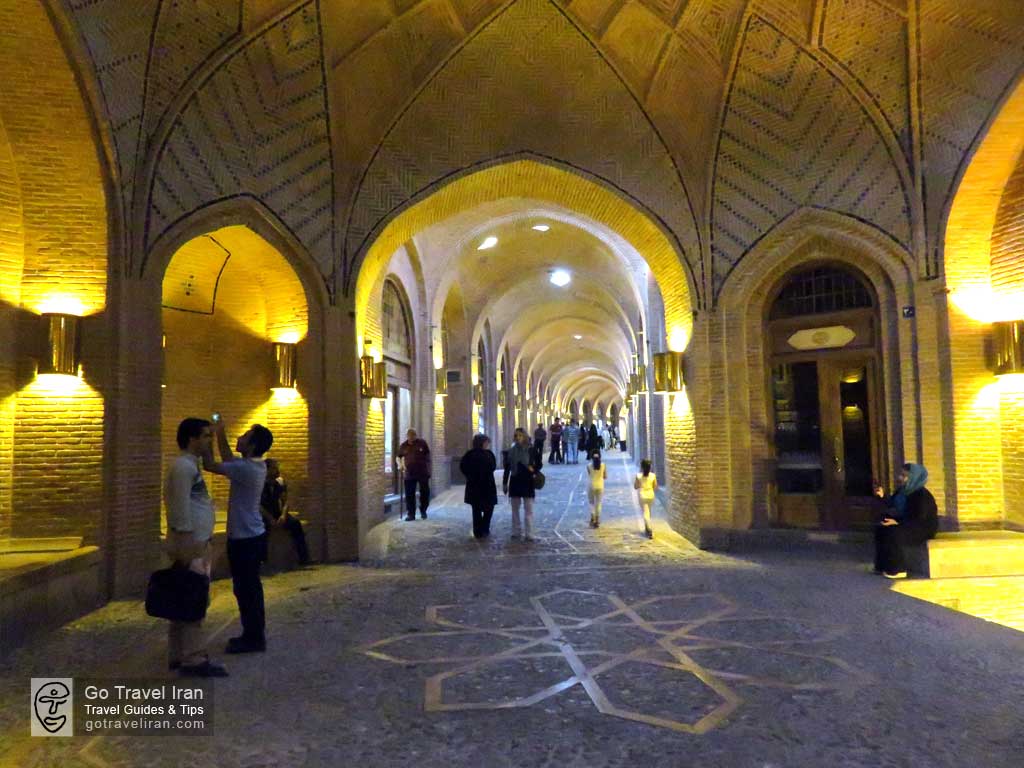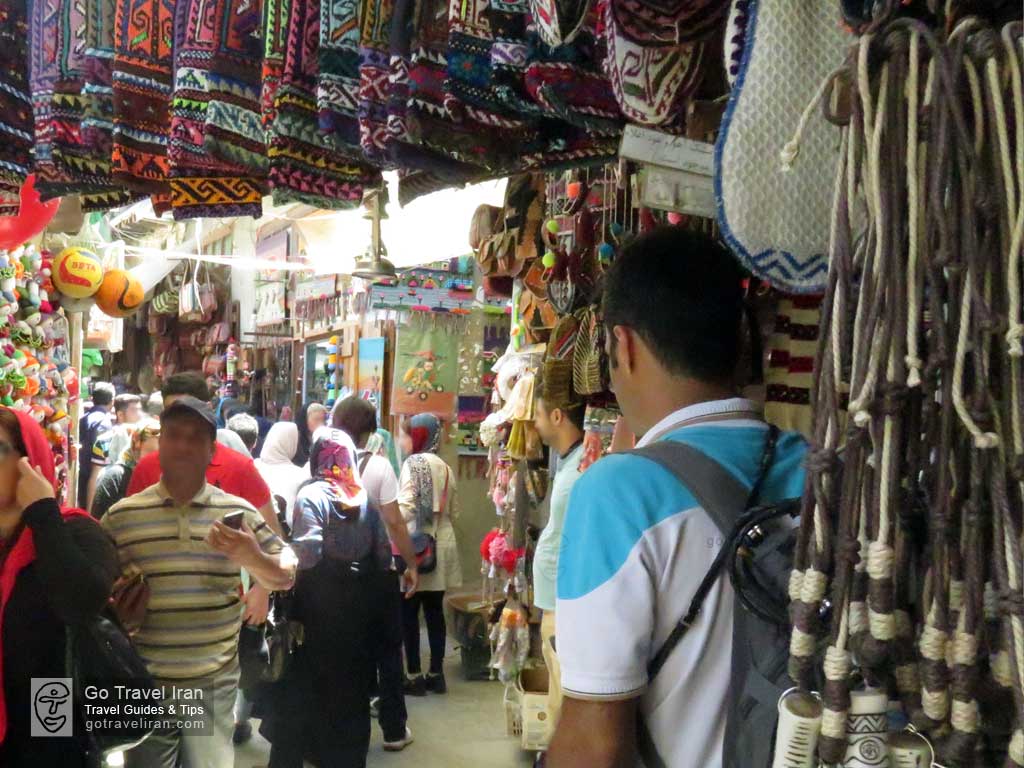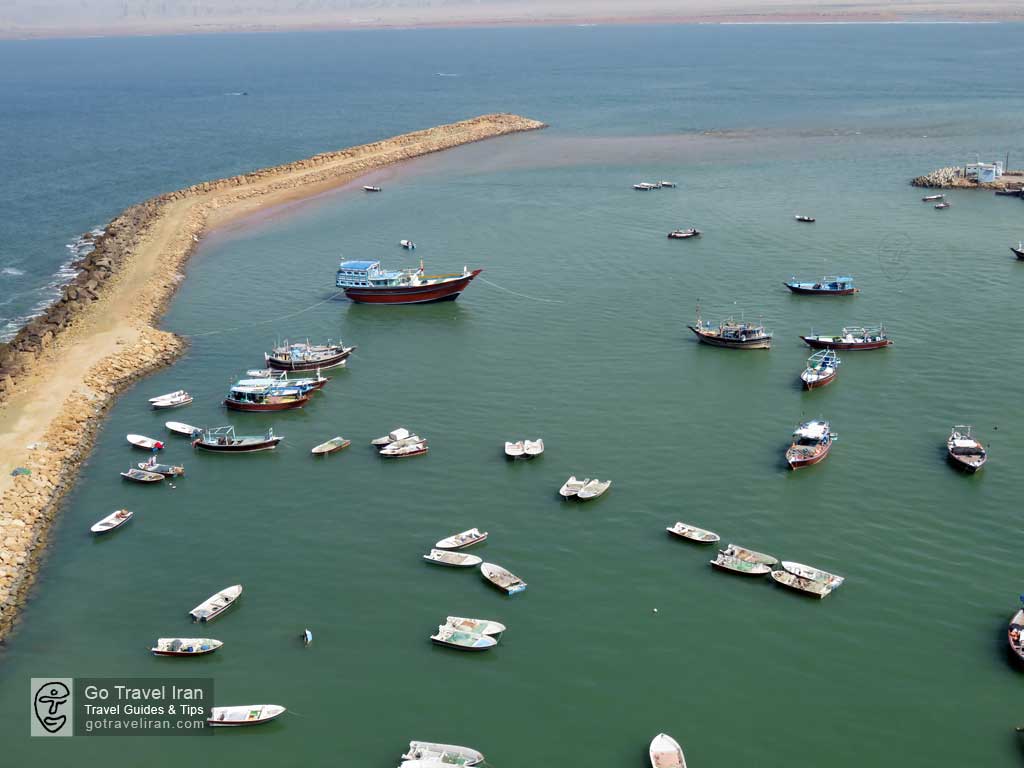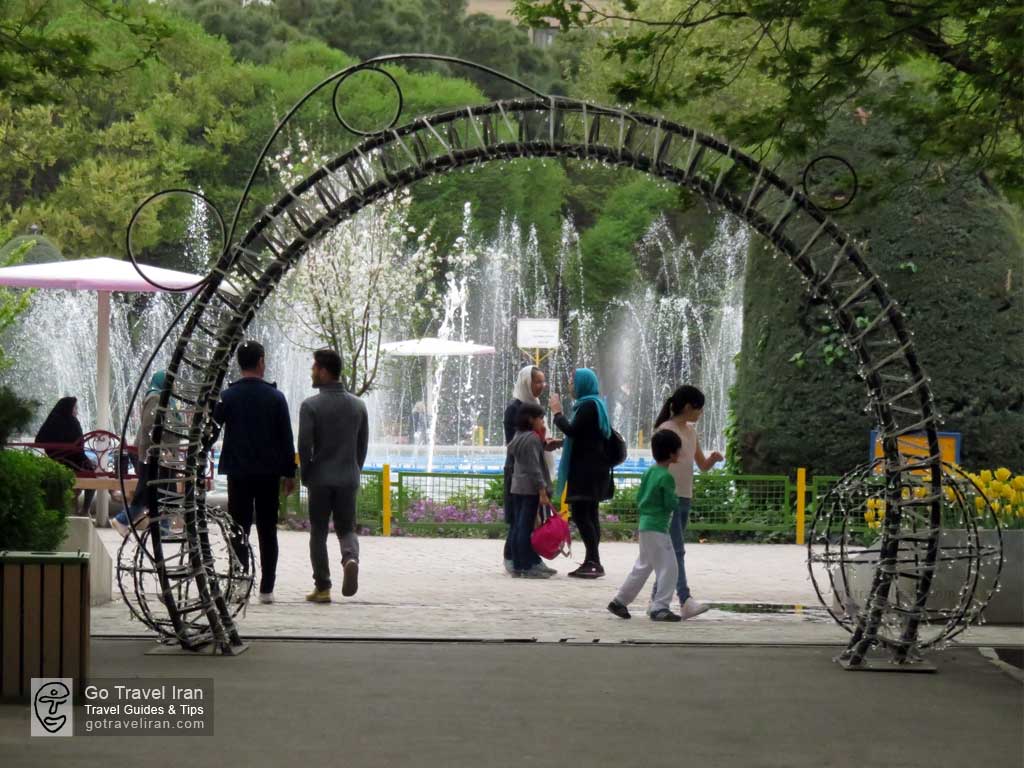How to get a visa for Iran: an ultimate guide to getting a tourist visa for Iran
Traveling to Iran will give you a unique experience of meeting friendly Iranians, visiting its outstanding architecture, discovering its rich history and culture, and enjoying its marvelous natural attractions. Though applying for your Iran visa used to be the most stressful part of travel in the past, it is quite easy and straightforward right now. Fortunately, the Iranian government has eased the visa process to make it possible for the majority of nationalities to simply collect their Iran tourist visa and have a memorable journey to Iran. Iran visa-free entry, Iran visa on arrival, and Iran visa in advance are the options that make the visa process as easy as possible.
Iran visa-free entry is dedicated to some lucky citizens who can travel to Iran without applying for any kind of tourist visa. Iran visa on arrival (VOA) is a kind of visa issued at Iran international airports for citizens of more than 180 countries in the world. It means that nationalities eligible to get Iran VOA can travel to Iran and collect their visa at the international airports without spending much time and money for collecting visa prior to their arrival. Iran visa in advance is a kind of tourist visa you need to apply for 60-90 days prior to your departure. US, UK, and Canadian citizens are ineligible to get Iran visa on arrival; therefore, they need to apply for an Iran visa before arrival(Iran airport visa) for traveling to Iran.
If you still believe that the visa process looks complicated, read the following article to know how to get a visa for Iran. We have provided you an ultimate guide to getting a tourist visa for Iran.
Table of Contents:
- Can I travel to Iran?
- What kind of visa do I need to visit Iran?
- How to get a tourist visa for Iran?
- What is Iran e-visa?
- What is the authorization code for getting Iran visa?
- What documents are required to fill out the Iran online visa application form?
- Can I apply for Iran visa on arrival (VOA)?
- What documents do I need to get an Iran VOA?
- What documents do I need to get an Iran visa in advance?
- Why should I use travel agencies’ visa service instead of MFA e-visa service?
- Who can travel to Iran without getting a visa?
- Enjoy visa-free travel to Kish and Qeshm Islands
- How to travel to Iran as an American, British or Canadian passport holder?
- How to get Iran visa as a citizen of Bangladesh, Afghanistan or Somalia?
- What nationalities cannot travel to Iran?
- How long does an Iran visa last?
- How to extend my Iran visa?
- Why should I apply for Iran visa in advance instead of Iran visa on arrival?
- Why do Iran visa applications get rejected?
- Tips to remember before applying for Iran visa
Can I travel to Iran?
Iran is a safe country to travel and the majority of nationalities can travel to Iran if they get an Iran tourist visa. Some citizens are even so lucky that they can travel to Iran without getting any kind of Iran tourist visa. Visa-free nationals are allowed to stay in Iran for a specific period depending on their nationality. At the moment, Israeli passport holders are the only citizens who cannot travel to Iran at all.
What kind of visa do I need to visit Iran?
You need to apply for an Iran tourist visa if you are willing to travel to Iran-individually or with a tour group- to see Iran tourist attractions or visit friends and relatives. An Iranian tourist visa allows you to stay for a maximum of 30 days in Iran, but it is possible to extend it.
There are two types of Iran tourist visas and you are supposed to apply for one of them regarding your nationality and priorities:
- Iran visa in advance (embassy tourist visa or Iran visa before arrival)
- Iran visa on arrival (Iran VOA or Iran airport visa)
Iran visa in advance:
Iran visa in advance is a kind of tourist visa you need to apply for 60-90 days before your departure. The process takes one to three weeks. If your visa application is approved, you should collect it from a specified Iranian embassy/consulate located in your home country. Iran tourist visa in advance will allow you to stay in Iran for a maximum of 30 days. It is valid only for 90 days from the issuing date; therefore, your Iran visa will be invalid and null if you arrive in Iran 91 days after the day your visa has been issued.
Iran visa on arrival:
Iran visa on arrival (VOA) is a tourist visa granted to citizens of 180 countries upon their arrival to Iran. VOA is issued for a maximum of 30 days at any international airport in Iran. Iran VOA allows you to apply for your visa just 48 hours before your arrival. Not all nationalities are eligible to apply for an Iran visa on arrival. Therefore, you should apply for an Iran visa in advance if you want to get an Iran visa as a US, UK, and Canadian citizen.
How to get a tourist visa for Iran?
Whether you apply for an Iran visa on arrival or Iran visa in advance, there is just a five-step procedure to get your Iran visa successfully.
- Fill out Iran online visa application (e-visa) form and upload your photo and the front page of your passport according to the requirements.
- Wait for the visa application receipt confirmation and the reference number (and pay the visa service fee if a visa supplier or tour company helps you to get your Iran visa).
- Wait for the Iranian ministry of foreign affairs (MFA) to assess your visa application form (it usually takes one to three weeks).
- Receive your authorization code from Iranian MFA, in case your visa application is approved.
- Pay the embassy fee and collect your Iran tourist visa from the Iranian embassy/consulate you have specified in the form or at the airport when you arrive in Iran.
You have two options to fulfill this five-step procedure to get your Iran visa. The first option is to do it by yourself and the second one is to let a travel agency help you through the visa process.
-
Do It by Yourself
Fill out the online visa application form available on the Iran Ministry of Foreign affairs website or the website of the Iranian embassy/consulate in your home country. If all goes well, Iran MFA will forward the authorization code for you and for the Iranian embassy that you have determined in the form. After receiving the authorization code, you will need to take your passport and the other required documents to the embassy/consulate to collect your visa for Iran. You can also send the documents plus your passport to the embassy and wait until your visa is delivered to your registered address. It usually takes about 6 weeks to get your Iran travel visa; therefore, you will need to apply for it at least 45 days prior to your departure or you could ask travel agencies to help you get Iran visa in a shorter period of time.
-
Ask a travel agency to help you get your Iran visa
If you ask a reliable travel agency or visa supplier to help you through the visa process, you will need to pay the visa service fee (LOI) varying from $30 to $70 with no refund. In fact, you choose to spend more money to save time. Travel agencies claim that they pave the way for you to get the authorization code in less than 7 working days. They might be very helpful to you; however, it is not guaranteed to get your Iran visa soon. Travel agencies would also ask you to fill out an electronic visa form and pay the visa service fee before sending your visa application to the Iranian MFA. If your visa application is approved by the Iranian MFA, the travel agency will forward the authorization number to you and the Iranian embassy/consulate specified in your visa application form. Then, you can go to the embassy/consulate and collect your visa. At the embassy/consulate, your visa is issued in less than 24 working hours.
Please note that the process would be slower for American, British, and Canadian citizens. They might be required to get ready for an interview at the embassy.
What is Iran e-visa?
Iran e-visa or Iran online visa application form is a visa service available both on Iran Ministry of Foreign affairs website (MFA) and on the websites of travel agencies and visa suppliers that help you through the visa process. Whether you wish to apply for a visa in advance or a visa on arrival, you will need to fill out the e-visa before your departure. You should complete the form with your personal information (first name, birth date, place of birth, occupation, etc.), contact information, passport information, and trip details. Trip details are the most important parts of the e-visa form and it requires information such as arrival and departure dates, travel duration and the place you prefer to get your Iran visa from ( at an Iranian airport or from a specified Iranian embassy/consulate at your country of origin). You are also supposed to upload your digital personal photo and your digital image of your passport before submitting the visa application form. After submitting the form, you will receive an email including a link and a verification code. You should click on the link and confirm your visa request in 12 hours; otherwise, your application form would be removed automatically from the MFA website. After completing the Iran e-visa form, all you need to do is to wait for receiving your authorization number from the Iranian ministry of foreign affairs (MFA).
What is the authorization code for getting Iran visa?
If you apply for your Iran visa in advance, you need to receive the authorization code directly from the Iranian MFA or the travel agency that has sent your visa application to the Iranian MFA. Iranian ministry of foreign affairs is responsible for assessing your visa application and informing you of your visa approval or rejection. The authorization code, also called Grant Notice of Iran Visa, Letter of Invitation (LOI) or Reference Number, is the approval number sent by the ministry of foreign affairs in Iran. Receiving the authorization number is the most important step for collecting Iran tourist visa in advance. It takes one to three weeks to receive the authorization code; however, travel agencies claim that they would receive it in less than seven working days. After approving your visa application form, MFA will send the authorization code to you and the Iranian embassy/consulate that you had specified in the visa form. At the next step, you need to go to the embassy/consulate with your passport, photos, fee, and other documents they determine in order to collect your visa. An Iran tourist visa in advance is issued for up to 30 days and it must be collected before traveling to Iran.
What documents are required to fill out the Iran online visa application form?
Whether you complete the e-visa form on Iranian MFA website or fill out the online application form provided by travel agencies, you should have the following documents at hand:
- Passport
- Travel itinerary, if you have already made travel arrangements.
- Résumé- you may be asked to explain your education and work history.
- Digital personal photo regarding the requirements.
- Digital image of your passport regarding the requirements.
- More Information– you might be asked to provide additional information for filling out the online application.
Can I apply for Iran visa on arrival (VOA)?
Iran visa on arrival (VOA) or Iran airport visa is a kind of tourist visa issued for the majority of nationalities who want to travel to Iran for tourist purposes. Therefore, passport holders with official and diplomatic purposes cannot apply for Iran visa on arrival. The VOA is only issued at Iran international airports and it is valid for 30 days. Therefore, if you plan to enter Iran overland, you cannot receive a VOA.
Iran visa on arrival is issued for nationalities from approximately 180 countries around the world, but citizens from US, UK, Canada, Colombia, Somalia, Bangladesh, Jordan, Iraq, Afghanistan, and Pakistan are not eligible to get a VOA and they need to apply for Iran visa in advance 60-90 days prior to their arrival.
Iranian VOA makes traveling to Iran much easier than the past, especially for Europeans. However, one might be denied entry at the airport for some reason.
What documents do I need to get an Iran VOA?
If you are eligible to obtain an Iran visa on arrival, bring along the following documents to receive your visa at the airport.
The documents required to receive an Iran VOA:
- Passport with a minimum of 6 months validity,
- Confirmed return ticket within 30 days,
- Photos to be attached to the visa application,
- Iran visa stamp fee in cash; it varies from €40 to €150 depending on the applicant’s nationality,
- A hardcopy of travel insurance valid for Iran,
- An invitation letter or hotel reservation voucher containing contact details. Otherwise, you might be waiting at the airport for a long time.
What documents do I need to get an Iran visa in advance?
Documents needed to get your Iran visa in advance might differ from one embassy/consulate to another. Therefore, it is better to check the website of the embassy/consulate you have specified in your Iran visa application form to exactly know what to take along. Here, we mention the most common documents needed to collect your Iran visa in advance at the embassy/consulate:
- Passport with a minimum of 6-months’ validity,
- passport photos (usually 2 photos are required),
- Passport copy,
- Visa application form. This one is collected and filled out at the embassy/consulate),
- Visa fee. The visa fee varies depending on your nationality,
- A hardcopy of travel insurance valid for Iran.
After receiving your authorization code from the Iranian MFA, take all the required documents to the embassy/consulate you had specified in the visa application. You are supposed to pay the visa fee and leave your passport at the embassy/consulate and wait for your visa to be issued in less than 24 hours.
When your visa application is approved, you must have travel insurance in order to collect your visa from an Iranian embassy/consulate in your home country or at a specified international airport in Iran. If you do not purchase travel insurance and do not have printed documentation of it, you cannot collect your visa. Moreover, make sure that your insurance covers your whole travel because some travel insurance cover merely limited regions of Iran. Please note that general terms like “middle east” or “Asia” on your insurance printout are not acceptable and the visa officer looks for the word “Iran” mentioned on your travel insurance document.
Why should I use travel agencies’ visa service instead of MFA e-visa service?
Some travelers have used the MFA e-visa service and got their authorization code in 5 business days. However, many travelers have experienced high rejection risk, difficulty in uploading images, and system errors on the MFA website. Since getting the authorization number is the most important step to get your Iran visa, it makes sense to let a reliable travel agency or visa supplier do the visa process on your behalf and receive the authorization code in 3-4 business days. Remember that granting visas is up to the Iranian MFA and there is no guarantee to get your Iran visa if you apply for it via a travel agency. Moreover, the visa agent will still take a visa service fee regardless of whether a visa is issued or not.
Who can travel to Iran without getting a visa?
Citizens from the Republic of Azerbaijan, Bolivia, Turkey, Syria, Lebanon, Georgia, Armenia, Venezuela, Egypt, and Malaysia are exempt from applying for a visa to enter Iran. Therefore, tourists from the above-mentioned countries are lucky enough to travel to Iran visa-free for a specific period varying from 15 to 90 days regarding their country of origin. Recently, Iran has approved visa-free travel for Chinese tourists as well and it may add more to the list of Iran visa-free nationals in the future.
Enjoy visa-free travel to Kish and Qeshm Islands
If you are eligible to get an Iran visa on arrival, then you can enjoy 14-day visa-free travel to Kish Island-as one of the most visited holiday destinations in Southwest Asia- and Qeshm Island-as a great eco-tourism destination in Iran. Many of the European expats who live in Dubai or Doha have this chance to spend weekends in Kish or Qeshm Island without being involved in the visa process. However, if you enter Kish or Qeshm Island and decide to explore more in the vast country of Iran, you need to apply for an Iran tourist visa. Fortunately, the visa application is easy in the free trade zones (Kish and Qeshm islands) and it usually takes less than two working days for the Iranian MFA representative offices to issue your visa, unless there is a serious problem. Americans, British, and Canadians are ineligible to obtain Iran VOA. Consequently, they cannot have visa-free entry to Kish and Qeshm islands. They should apply for an Iran visa in advance before planning a trip to these gorgeous islands located in the south of Iran.
How to travel to Iran as an American, British or Canadian passport holder?
Americans, British, and Canadian passport holders can travel to Iran and enjoy their visit; however, it takes longer to get an Iran travel visa as a US, UK or Canadian citizen. As a citizen from the above-mentioned countries, you cannot get an Iran visa on arrival. Therefore, you should apply for an Iran tourist visa in advance _ also called embassy tourist visa_ approximately 60-90 days before your departure. As a US, UK, and Canadian traveler, you cannot either travel to Iran without a guide; therefore, it is necessary to book a trip to Iran via a reliable travel agency before applying for your Iran visa. After booking a tour to Iran through a travel agency, you can apply for a tourist visa, receive the authorization code, and refer to a specified Iranian embassy/consulate to collect your Iran visa.
How to get Iran visa as a citizen of Bangladesh, Afghanistan or Somalia?
Citizens of Bangladesh, Afghanistan, and Somalia can travel to Iran, but they are neither allowed to apply for Iran e-visa nor Iran visa on arrival. If you wish to travel to Iran as a citizen of Bangladesh, Afghanistan or Somalia, you should go to the Iranian embassy/consulate at your home country to apply for your Iran tourist visa in advance.
What nationalities cannot travel to Iran?
All nationalities are welcomed to Iran except for Israeli passport holders. Iran will not issue visas for Israeli passport holders. Regardless of your nationality, you cannot have an Israeli stamp in your passport. Though Israel does not stamp passports, having any evidence of entry in Israel such as exit stamps at Jordanian or Egyptian border crossings into Israel will turn you away from entering Iran.
How long does an Iran visa last?
Iran visa on arrival and Iran visa in advance, as two types of Iran tourist visas, are valid for a maximum of 30 days in Iran. Depending on your nationality, you are allowed to stay in Iran for 15 days up to a maximum of 30 days. It is also possible to extend your Iran visa and enjoy your visit for up to 90 days.
How to extend my Iran visa?
You can extend your Iran travel visa whether it is a visa on arrival or a visa in advance. Iran tourist visas will allow you to stay in Iran no longer than 30 days, but it is possible to extend your visa twice to stay in Iran as long as 90 days. However, the possibility of visa extension denial still exists.
You can extend your visa at any Immigration Visa Office in Iran. The process might take about 24 hours and it is up to the visa officer to extend your visa or not. You may obtain a maximum of 14-day extension or more depending on the officer’s decision.
Why should I apply for Iran visa in advance instead of Iran visa on arrival?
Iran’s visa on arrival has made the visa process as easy as possible. Over 180 countries are eligible to easily travel to Iran and get their visa on arrival at the airport. However, there are still some reasons to persuade you to apply for an Iran visa in advance instead of an Iran visa on arrival.
-
Traveling to Iran overland
Iran visa on arrival is only issued at international airports in Iran. If you aim to cross the borders and enter Iran via the neighboring countries such as Afghanistan, Iraq, Azerbaijan, Pakistan, Turkey or Turkmenistan, you must apply for Iran visa in advance.
-
Securing your Iran visa
Though your visa on arrival is rarely rejected, not having a return flight ticket or not being able to contact your host at the airport are the issues that make the authorities deny your visa on arrival application. Therefore, you might prefer to secure your visa by applying for an Iran visa in advance.
-
Saving time in Iran
If you get your visa in advance before your departure, you can leave the airport just as you arrive in the country. However, if you prefer to get your Iran visa on arrival, you will need to wait some hours in order to get your visa on arrival issued at the airport. Getting your Iran tourist visa in advance will save you from waiting in visa lines at Iran airports.
-
Being a citizen of Canada, America, UK, or other ineligible countries to get an Iran VOA
Since not all nationalities are eligible for an Iran VOA, you might need to apply for your embassy tourist visa. Moreover, citizens from the US, UK, and Canada are not allowed to travel to Iran independently. Therefore, they should book a tour to Iran through a reliable travel agency before applying for an Iran visa in advance.
Why do Iran visa applications get rejected?
Fortunately, the majority of applicants get an Iran tourist visa successfully and roughly 5% of Iran visa applications might get rejected. It is possible to reapply for an Iran visa if your visa application gets rejected once. Anyhow, read the followings to get aware of some reasons why your Iran tourist visa application might be rejected and learn how to avoid visa rejection risk:
-
Israel passport holders and Israeli stamps in passports
Israeli citizens are not allowed to enter Iran. Unfortunately, as a traveler from another country, you will not be able to obtain Iran visa if you have Israeli stamps or any other evidence of visiting Israel in your passport.
-
Occupying some specific job positions
Iranian authorities are very cautious about some job positions. If you are a journalist, media person, or political character, your visa application is likely to get rejected.
-
Missing Iran visa documents and requirements
If your visa application does not meet the requirements mentioned in the application form, your request might get rejected. Uploading photo or passport copy regardless of the requirements, not filling out visa form correctly and completely, or representing a 60 day Iran travel itinerary while you know that Iran tourist visa is granted for a maximum of 30 days are some of the reasons that increase the risk of Iran visa rejection. Your documents also need to meet the requirements. For instance, your passport needs at least 6 months of validity; otherwise, your visa application gets rejected.
-
Having no good reason for traveling to Iran
To obtain an Iran tourist visa, you need to clarify that you want to visit Iran for sightseeing purposes. Representing a clear and detailed itinerary can help you prove your claim. Please note that the number of days staying in Iran must match the number of days needed to visit tourist attractions. Moreover, you need to explain what cities and places you want to see and how much time you dedicate to each city or attraction.
-
Diplomatic Relations
If you have been involved in any political actions against Iran, it is more possible to get your Iran visa application rejected.
Tips to remember before applying for Iran visa
- If you have dual nationality, your nationality in the visa application form must be the same as that shown in your passport. In case your nationality in the visa form is different from the nationality in your passport, the visa would be void.
- You should have at least six months’ validity on your passport before you travel; otherwise, Iran tourist visa will not be granted for you.
- Your digital photo needs to meet all the requirements mentioned in the Iran visa application form.
- Your digital copy of the passport needs to meet all the requirements mentioned in the Iran visa application form.
- If you should apply for your Iran visa in advance, leave 60-90 days to applying for your visa before your departure and do not book flights to Iran before collecting your visa.
- Specify the exact embassy/consulate/ or the Iranian airport where you want to pick up your visa.
- Travel agencies could help you through the visa process; however, Iranian MFA makes the final decision on allowing you to enter Iran or not. Therefore, asking a travel agency for Iran visa services does not necessarily mean that your Iran visa application will not be rejected at all.
- Travel agencies take their visa service fee, no matter whether you get your Iran tourist visa or not.
- Iran VOA is not issued for all nationalities. Citizens of the US, UK, and Canada cannot get an Iran visa on arrival. Therefore, they should apply for an Iran visa in advance before traveling to Iran or booking flights.
- Citizens of the US, UK, and Canada need to book a tour to Iran before applying for an Iran visa. They are not allowed to visit Iran without a guide. Therefore, an approved guide should accompany them from arrival to departure.
- When the visa application is approved, it is necessary to have travel insurance in order to collect the Iran visa. General terms like “middle east” or “Asia” on your insurance printout are not acceptable and the visa officer looks for the word “Iran” mentioned on your travel insurance document.
- Tourist passports will not be stamped in Iran and only electronic visas are issued for travelers. Regarding a US law in 2015, travelers who visit Iran and six other countries would be subject to enhanced security for entering the US later. Therefore, tourists and travelers will not be in trouble for entering the US after visiting Iran.
In order to find Iran visa questions and answers, read Iran Visa FAQs as well.
